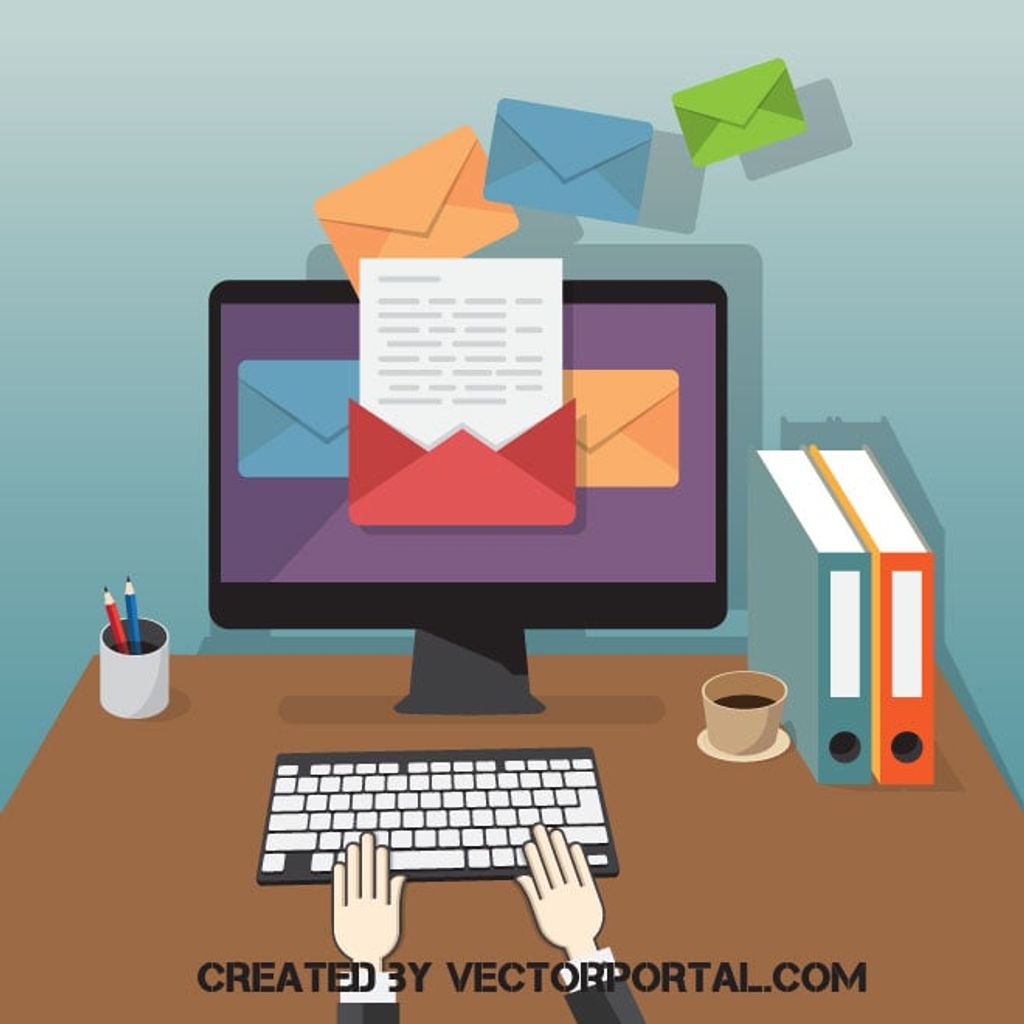
In today's digital age, email has become an essential tool for freelancers to communicate with clients, manage projects, and stay organized. However, the influx of emails can quickly become overwhelming and time-consuming. That's why optimizing your freelancer email workflow is crucial to maximize productivity and efficiency. By implementing the right strategies and utilizing the right tools, you can streamline your inbox, automate responses, and improve communication with clients. In this article, we will explore various techniques and tools to optimize your freelancer email workflow and help you stay on top of your game.

Managing emails can be overwhelming for freelancers, especially when dealing with multiple clients and projects. It's important to stay organized and efficient to ensure timely responses and avoid missing important messages. Here are some common challenges freelancers face when it comes to email management:
One of the most effective ways to manage your inbox and save time is by using email filters. Email filters allow you to automatically sort incoming emails based on specific criteria, such as sender, subject, or keywords. By setting up filters, you can ensure that important emails are prioritized and organized, while less important ones are filtered away.
Using email filters can help you:
Tip: Experiment with different filter criteria to find what works best for you. You can always adjust and refine your filters as needed.
Automating email responses can greatly improve efficiency and save time for freelancers. By setting up email templates or using email automation tools, freelancers can quickly respond to common inquiries or requests without having to type out the same response every time. This not only saves time but also ensures consistency in communication. Additionally, automating email responses allows freelancers to prioritize their workload and focus on more important tasks. With automated responses, freelancers can set expectations with clients regarding response times and provide timely updates on project progress.
When it comes to organizing your email folders for easy access, there are a few strategies you can implement:
Create folders based on categories: Start by creating folders that align with different categories or projects you work on. This will help you keep your emails organized and easily find what you need.
Use subfolders for further organization: If you have a large number of emails within a category, consider creating subfolders to further organize them. For example, within a 'Client Projects' folder, you can have subfolders for each individual client.
Color-code your folders: To visually differentiate between folders, consider assigning different colors to each folder. This can make it easier to quickly locate specific folders.
Tip: Avoid creating too many folders as it can become overwhelming. Find a balance that works for you and allows for easy navigation.
Remember, the goal is to have a folder structure that makes it effortless to locate and access your emails.

Creating custom email templates can significantly improve your efficiency as a freelancer. By having pre-written responses for common inquiries or requests, you can save time and ensure consistency in your communication. Here are some tips for creating effective email templates:
Tip: Use placeholders or variables in your templates to easily insert client-specific information, such as their name or project details.
Creating custom email templates can streamline your workflow and help you deliver prompt and consistent responses to your clients.
When it comes to client onboarding, utilizing email templates can greatly streamline the process and ensure consistency in communication. Email templates are pre-written messages that can be customized and sent to clients during different stages of onboarding. They save time and effort by eliminating the need to write the same email content repeatedly. Here are some benefits of using email templates for client onboarding:
Personalizing email templates is a crucial aspect of effective communication as a freelancer. It allows you to tailor your messages to each client, making them feel valued and understood. By personalizing your email templates, you can create a more personalized and engaging experience for your clients.
One way to personalize your email templates is by including the client's name in the greeting. This simple gesture can make a big difference in how your message is received. Additionally, you can customize the content of the email to address specific client needs or concerns.
Another important aspect of personalizing email templates is using a friendly and conversational tone. By adopting a more casual tone, you can establish a rapport with your clients and make them feel more comfortable interacting with you.
In addition to personalizing the content and tone of your email templates, you can also consider including relevant and timely information. This could include referencing recent projects or industry news that may be of interest to your clients.
Overall, personalizing email templates is a powerful way to enhance your communication as a freelancer and build stronger relationships with your clients.
Managing and updating email templates is essential for freelancers to maintain efficiency and consistency in their communication. By regularly reviewing and refining templates, freelancers can save time and ensure that their messages are clear and professional. Here are some tips for effectively managing and updating email templates:
By following these tips, freelancers can optimize their email templates and enhance their overall communication workflow.

Crafting clear and concise email subject lines is crucial for effective communication. A well-written subject line can grab the recipient's attention and convey the purpose of the email. Here are some tips to make your subject lines stand out:
Crafting compelling subject lines can increase the likelihood of your emails being opened and read.
When communicating with clients via email, it is important to maintain a professional and polite tone. This not only reflects positively on your professionalism but also helps to build strong relationships with your clients. Here are some tips to ensure your email messages are professional and polite:
Remember, effective communication is key to successful freelancing.
When communicating with clients via email, it is important to maintain a professional and polite tone. Clear and concise subject lines can help ensure that your emails are read and responded to in a timely manner. Additionally, it is crucial to write email messages that are professional and polite, avoiding any language or tone that may be perceived as unprofessional.
To effectively communicate with clients, it is also important to follow proper email etiquette. This includes using a salutation at the beginning of the email, addressing the recipient by their name, and using a closing at the end of the email. It is also important to proofread your emails for any grammatical or spelling errors before sending them.
In order to maintain clear boundaries in email communication, it is important to establish response time expectations with clients. This can help manage client expectations and ensure that you are able to respond to emails in a timely manner. It is also important to set boundaries around after-hours communication and establish a clear policy for when and how you will respond to emails outside of regular working hours.
Setting clear boundaries in email communication is essential for freelancers to maintain a healthy work-life balance. It is important to establish expectations with clients regarding response times and availability. By clearly communicating your availability and response times, you can manage client expectations and avoid unnecessary stress. Additionally, it is crucial to set boundaries around checking and responding to emails outside of working hours. This allows freelancers to have dedicated time for rest and relaxation, promoting overall well-being and productivity.
When it comes to managing a large volume of emails, mastering advanced search techniques in your email client can be a game-changer. By utilizing the powerful search features available, you can quickly find specific emails, filter results based on criteria, and save time navigating through your inbox.
One useful technique is to use search operators to refine your search queries. For example, you can use the 'from:' operator to search for emails from a specific sender, or the 'subject:' operator to search for emails with a specific subject line. This can be particularly helpful when you're looking for a specific email in a cluttered inbox.
Another technique is to use search filters to narrow down your search results. Most email clients allow you to filter emails based on criteria such as date, sender, or keywords. By combining multiple filters, you can quickly find the exact emails you're looking for.
Additionally, some email clients offer advanced search options that allow you to search within specific folders, search for emails with attachments, or search for emails that match multiple criteria. These advanced search options can further enhance your ability to find and organize your emails.
Email labels and tags are powerful tools for organizing and categorizing your inbox. By assigning labels and tags to your emails, you can easily filter and search for specific messages, making it much more efficient to find the information you need. Here are some tips for creating and utilizing email labels and tags:
Tip: Regularly review and update your labels to ensure they continue to serve your needs and reflect any changes in your workflow.
Implementing email labels and tags can greatly improve your email workflow by providing a structured and organized system for managing your messages. Take the time to set up and maintain your labels, and you'll save valuable time and effort in the long run.
To keep your inbox organized and clutter-free, it is important to regularly archive and delete emails. Here are some strategies to help you effectively manage your email clutter:
Implement a table for presenting structured, quantitative data. If you have emails that contain important data or statistics, consider creating a table to present the information in a clear and organized manner. This can make it easier to quickly reference and analyze the data.
Use a bulleted or numbered list for less structured content. When dealing with less structured content, such as steps, qualitative points, or a series of related items, using a bulleted or numbered list can help break down the information into easily digestible chunks.
Tip: Regularly review and delete unnecessary emails to prevent your inbox from becoming overwhelmed with outdated or irrelevant messages.
Remember, maintaining an organized inbox can greatly improve your productivity and efficiency as a freelancer.
When it comes to managing email attachments, implementing a file naming system can greatly improve your organization and efficiency. By using a consistent naming convention, you can easily locate and identify specific files without wasting time searching through a cluttered folder.
Here are some tips to help you create an effective file naming system:
Tip: Consider using a consistent format for your file names, such as 'YYYY-MM-DD_filename' or 'filename_v1.0'. This can help you easily sort and organize your attachments chronologically or by version.
By implementing a file naming system, you can streamline your email attachment management and save valuable time when searching for important files.
In conclusion, optimizing your freelancer email workflow is essential for maximizing productivity and efficiency. By utilizing the right tools, such as the Tool Name, you can streamline your communication, organize your inbox, and ensure timely responses to clients. With improved email management, you can focus more on your work and deliver high-quality results. Don't let email overwhelm you, take control of your freelancer email workflow today!
Email workflow optimization can benefit freelancers by improving efficiency, reducing time spent on email management tasks, and enhancing overall productivity. It allows freelancers to streamline their inbox, automate repetitive tasks, and communicate effectively with clients.
Freelancer email management can be challenging due to the high volume of emails, the need to prioritize and respond promptly, the risk of missing important messages, and the time-consuming nature of organizing and searching for specific emails.
Email filters can help in streamlining the inbox by automatically categorizing and organizing incoming emails based on predefined criteria. They can be used to prioritize important emails, filter out spam or low-priority messages, and create folders or labels for easy access and organization.
Automating email responses can save freelancers time and effort by automatically sending predefined responses to common inquiries or requests. It ensures prompt replies, maintains professionalism, and allows freelancers to focus on other important tasks.
Organizing email folders can improve workflow by providing easy access to specific types of emails or client conversations. It helps freelancers stay organized, locate important information quickly, and maintain a clutter-free inbox.
When managing email templates, it is important to regularly review and update them to ensure they reflect current information and are tailored to each client's needs. It is also recommended to categorize templates based on their purpose and use descriptive names for easy identification.